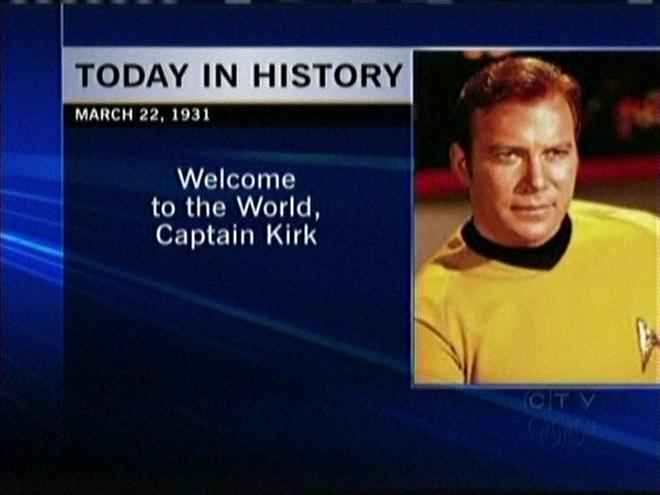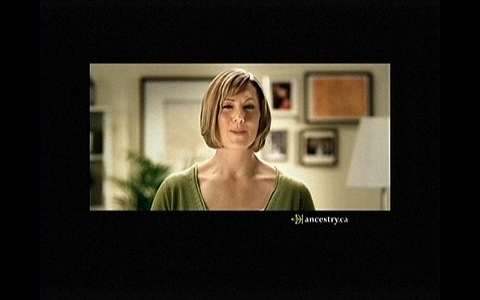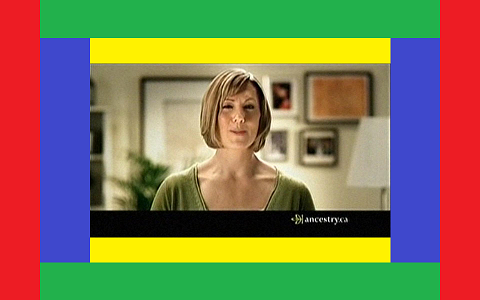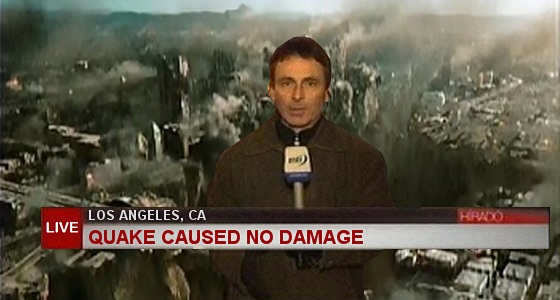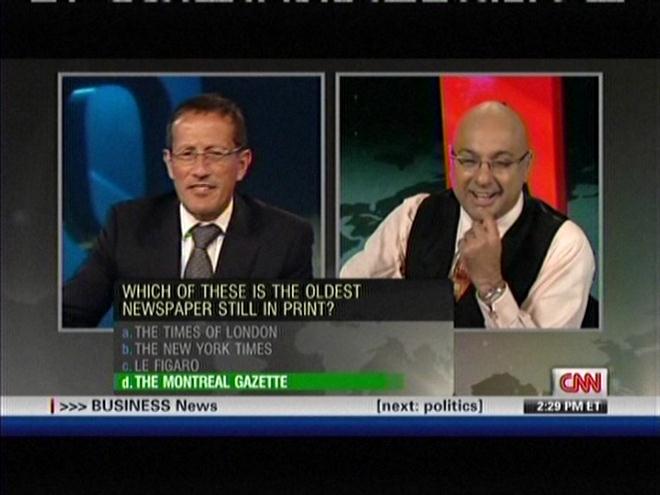William Shatner turned 81 today.
I have been exchanging e-mails with a friend. We discussed, among other things, Rush Limbaugh’s now infamous comments on Sandra Fluke.
In response to comparisons of Limbaugh to some of the vile comments made by left-wing personalities like Bill Maher in the past (who called, for instance, Sarah Palin a ‘cunt’), I said this:
“I also note that Limbaugh’s rant went way beyond the use of an offensive word: he discussed Susan [sic!] Fluke’s sexual habits repeatedly and in detail, and once he was done demonstrating his complete ignorance on the topic of birth-control drugs (no, the amount of birth control pills consumed is not related to the amount of sex a person has, he must have confused it with the pills he takes for sex; and no, Fluke was not discussing recreational use of birth control pills but specifically their widespread use to treat serious gynecological conditions) he actually asked her publicly to make a porn video of her sexual activities. And, unlike the liberal comedians mentioned (who are, after all, comedians) Limbaugh did this in all seriousness. If I had been in Fluke’s place, I’d have called Limbaugh a lecherous, drug-addled dirty old pig. Fluke was more of a lady than I am a gentleman, I guess.”
And then I realized that I should not be ashamed of my words. Instead of saying what I should do in Fluke’s place, let me just do it, plain and simple:
In my opinion, Limbaugh is a lecherous, drug-addled dirty old pig.
This is something I griped about before. Moments ago, I saw the following picture on the CBC Newsworld analog cable channel:
Yes, it does look like a ridiculous amount of blackness surrounding a small-ish picture. It turns out that I was looking at…
- a standard-definition (4:3) broadcast signal on a 16:10 widescreen monitor, containing…
- widescreen (16:9) original material letterboxed into the standard-definition (4:3) frame, containing in turn…
- standard definition (4:3) material letterboxed into a wide-screen (16:9) frame, that in turn contained…
- widescreen (16:9) original material.
Confusing? Well, perhaps this picture clarifies it a little bit:
- The yellow bars at the top and bottom were added when the original 16:9 material was letterboxed into a 4:3 standard-definition frame;
- The blue bars on the sides were added when this 4:3 material was letterboxed into a 16:9 broadcast frame;
- The green bars were added when the widescreen 16:9 broadcast was reformatted for the standard-definition 4:3 analog standard;
- The red bars are the unused area on my 16:10 monitor when I was watching this signal full screen.
Still complicated? Let me make it simpler, then. After years of trying (and failing) to sell us high-definition televisions, manufacturers realized that casual viewers can’t readily tell the difference between resolutions; they can, however, tell the difference if the shape is different. So they opted to develop a widescreen high definition format. (Back in the 1950s, a similar reasoning led the movie industry to change to a widescreen format. It was not for technical or artistic purposes; it was pure marketing.)
The end result? In this example, approximately 65% of my beautiful high-resolution display is unused, with a postage-stamp like picture occupying the center 35%.
Welcome to the 21st century.
Looks like I am into signing petitions this week. I don’t like it, but I take it as a sign of the times that we live in.
Today, it’s the CBC’s turn; specifically, the unbelievable news that the CBC may begin dismantling its physical music archives next month.
I added the following comment when I signed the online petition: “Decades from now, the decision to discard these archives will be viewed as a grave, irreversible act of cultural vandalism. It is inconceivable that the leadership of the CBC is considering this. Then again, looking at what they’ve done to CBC Radio 2 and the Radio Orchestra, perhaps nothing should surprise me anymore…”
The newest Hungarian Internet meme is alive and well: thanks to the Two-Tailed Dog Party, everyone can now construct their own version of a still television frame with Hungary’s latest celebrity news reporter, Andras Vigh, made famous by reporting on a massive opposition rally earlier this week using an empty street as a backdrop.
I now constructed my own. I just watched “2012” last night for the first time, and it seemed appropriate. Here is the English version.
The word “meme” is a relatively new one, originally coined by Richard Dawkins in his 1976 book, The Selfish Gene as the cultural analog of a gene. A meme is a concept or an idea that spreads to person to person within a culture. By their very nature, good memes survive even in harsh environments, despite official sanctions, bans, or attempts at censorship.
Two days ago, a massive demonstration took place in Budapest, Hungary, triggered by the country’s new constitution and the increasingly authoritarian behavior of the ruling Fidesz party. The country’s public television channel tried to downplay the significance of these demonstrations in its evening newscast, strategically placing its reporter on a quiet street, away from the crowds.
In protest, Hungary’s pre-eminent frivolous political party, the Two-tailed Dog Party published a satire of the evening newscast. This was too much for the humor-deficient political elite of (no longer The Republic Of) Hungary: the Web site was banned. (For now, the youtube version of the video is still available.)
But it’s a tad harder to ban a meme. Since the ban, a new form of art is spreading on Hungarian Web sites: the image of the same television reporter pasted in front of varying historical backgrounds, with humorous captions. Here is my favorite:

There was little public interest as members of his immediate family joined Jesus C. (33), a felon with multiple convictions known for his anti-regime speeches, on his final voyage.
In English, the on-screen captions read: “Golgota; Live; In three days, no one will remember the storyteller”.
Try banning this, clowns.
Has anyone noticed that the opening notes of the theme song of Inspector Gadget sound awfully familiar to Bach’s Double Violin Concerto in d minor?
(Not to mention the similarities between the bumblings of Inspector Gadget and a certain well known Doctor…)
Every summer, on every Canadian TV channel, during just about every commercial break, a commercial for Marineland in Niagara Falls is shown… with a song that just drives me bonkers. I’d sooner listen to a hundred pieces of chalk scratching a hundred chalkboards. Will they ever stop?
Here’s an interesting argument explaining why the decision to dilute CBC Radio 2 could be strategically devastating for the CBC: the supporters they lost were not only vocal in their opposition to the changes, but also the most fierce defenders of continuing government support and funding for the CBC. No offense to rapper “Buck 65” but I seriously doubt that his listeners would write to their MPs when the CBC’s funding is threatened… certainly not with the same ferocity as listeners of Jurgen Gothe’s unforgettable Disc Drive did while that program was still on the air.
When public institutions hire executives from the private sector, they must keep this in mind. The much coveted younger demographic may not be what public institutions need to go after… as they are not necessarily the ones most likely to vote.
I am listening to the Classical stream of CBC radio, and the music selection is very good. It is also utterly soulless.
You see, radio without presenters is no radio at all. I miss the likes of Jurgen Gothe who’d tell me something about the music. Why it was composed. When it was composed and where. Something about the composer, and why this particular piece was chosen to be played tonight.
For instance, right now I am listening to the 1st movement of Bax-Arnold’s Concertante. Back in the good ole’ days, Jurgen Gothe would have told me who this Bax-Arnold was. Yes, I can use Wikipedia and find out that “Bax-Arnold” is really English composer Sir Arnold Edward Trevor Bax, and that he wrote several pieces titled Concertante between 1918 and 1949, and thanks to Google and the disk number provided by the CBC, I can even figure out which of these is being played (it’s the Concertante for Piano Left Hand) but Internet searches are no substitute for the warm, friendly voice of a radio host who would tell me all this and more, anecdotes, back story, or completely irrelevant trivia about Ashley Wass on the piano, conductor James Judd, or perhaps the Bournemouth Symphony Orchestra and its relationship, if any, to the Bayview Retirement Home in Bournemouth in the British sitcom Waiting for God.
The music now changed. CBC now informs me that I am listening to the 3rd movement, Marche Funebre, by a composer named “Not Found”. Whatever happened to poor Chopin that a national radio station can no longer find his name?
Not to mention that unlike this sterile Classical stream (really just an endless playlist with an incomplete tombstone database), CBC Radio 2 wasn’t purely classical. Jurgen Gothe in particular had an eclectic selection of classical and modern, pop and jazz, Canadian folk music, and more. He was always full of surprises. The changes made to CBC Radio 2 just drastically narrowed the station’s scope for much of the broadcast day, because now, the richest musical genre of all (really, a collection of many genres) is simply excluded.
No wonder I nowadays listen to BBC 3 more than the CBC.
You gotta love these talking heads on TV.
A few minutes ago, I was listening to a CNN expert (I made a note of his name but it’s not relevant; this is not meant to be a personal attack on anyone but a criticism of television journalism in general, putting talking heads who know little more than the general public in front of live cameras). The expert was discussing the possible fate of the Fukushima nuclear power plant, making comparisons between the events unfolding in Japan and what happened 25 years ago in Chernobyl. This is when he uttered the sentence, “in Chernobyl, the core got uncovered“.
The problem with this utterance is that the core in Chernobyl was never covered (with water) in the first place.
The RBMK reactor used in Chernobyl has a graphite core that is not submerged. Water circulates in channels. What happened in Chernobyl was not that the core was uncovered, but that water boiled away. The resulting voids (containing only steam, far less dense than water) were no longer absorbing neutrons (which were still moderated by the graphite, but now in greater numbers), further accelerating the rise of heat in the reactor, producing more voids in a runaway reaction. Nothing like that can happen in a water-moderated reactor, where boiling the water away reduces the reaction rate, as fewer neutrons are moderated.
That is not to say that such a reactor cannot suffer a catastrophic meltdown. This is what happened at Three Mile Island, when a reactor’s core there was indeed uncovered due to errors in operating procedure and a stuck valve. In Three Mile Island, what saved the day was a reactor containment vessel that prevented a Chernobyl-type release of radioactive material to the environment. I fear that rather soon, we’ll find out just how good the containment vessel is at Fukushima I-1.
Back in the 1950, movie studios switched to widescreen in order to arrest the loss of audiences due to the emergence of television. The intent was to create a format that was intentionally incompatible with the 4:3 aspect ratio of the television screen.
In the 1990s, various standards for high-definition television were proposed but they never caught on; I suspect that part of the reason was that regular television already provided a signal that was of sufficient quality for most viewers.
So, our masters and secret overlords reinvented the wheel: a new high-definition television standard emerged that not only increased the number of pixels you see, but also changed the width. Instead of 4:3, we now had a new standard with a 16:9 aspect ratio.
I don’t know if 16:9 is in any way “better” than 4:3. I suspect it isn’t, actually (you may think HDTV adds pixels on the left and the right but it’s equally valid to think that it’s taking pixels at the top and the bottom away) but it doesn’t matter. What matters is that in the minds of most people, “HDTV” has little to do with “definition” (i.e., pixel resolution) and a lot more to do with the wide aspect ratio. What they may not realize is just how badly we have been cheated.
Why? Well, take that nice shiny new HDTV that you just unpacked and hung on the wall, verifying that all 100% of its pixels work as they should:

So you turn that TV on and tune it to the first station, which happens to be an analog station (or perhaps a digital station sending a non-HDTV signal). Unless your TV has been factory set to “stretch” (and distort) the picture, chances are that you will see two wide black bars on both sides of the narrow picture:

Not too bad, perhaps, but what if that non-HDTV signal was actually originally an HDTV program? Happens more often than one might think, especially as a growing number of non-HDTV stations are just rebroadcasting an HDTV signal with horizontal bars at the top and bottom:

And that, unfortunately, is not the end of it. That original HDTV signal often contains clips that were shot in the 4:3 aspect ratio, which means… yes, more black bars:

And this is not an extreme case. It happens quite regularly. Here’s an example from CNN just a few minutes ago:

There is the set of horizontal bars at the top and bottom and, apart from the news ticker at the bottom, two sets of vertical black bars framing the picture. That shiny new HDTV with its 42″ full-HD screen is suddenly reduced to a 26″ diagonal visible area with the resolution (1080×810) of a decade-old laptop.
Progress is wonderful, I guess. The good thing is, you can all watch it in stereoscopic vision, I mean “3D”; so long as you don’t mind wearing goofy glasses, taking lots of Aspirin for that nasty headache, and not moving your head around too much, lest the lack of parallax destroy the illusion.
I swear that when I first saw this news headline frame on BBC World News, I thought I was looking at a herd of sheep in a field:
In reality, I think, these are some of the antennas of the Very Large Array.
Here’s a wonderful quote from Saturday Night Live’s impersonation of Julian Assange talking about Mark Zuckerberg: “What are the differences between Mark Zuckerberg and me? Let’s take a look. I give you private information about corporations for free. And I’m a villain. Mark Zuckerberg gives your private information to corporations for money and he’s Man of the Year.”
SNL’s Assange also praised Time magazine for being on top of things, discovering Facebook “only weeks after your grandmother”.
Here’s a headline from Google News that illustrates just how difficult it is for a non-native speaker of English (or, for that matter, for many a native speaker!) to understand journalists:
ABC Online: Houston expects changes for diggers under Petraeus
OK, so if you watch the news at all, you’d know that Petraeus is the US general who’ll be taking over in Afghanistan. But unless you also know that “ABC” can refer to the Australian Broadcasting Corporation, that Angus Houston is Australia’s Chief of the Defense Force, and that “digger” is a slang term for Australian or New Zealand soldiers, you could be excused if you thought that this was not an article title but a cryptic crossword entry.
This Homer Simpson is one smart fellow. While he was trying to compete with Edison as an inventor, he accidentally managed to discover the mass of the Higgs boson, disprove Fermat’s theorem, discover that we live in a closed universe, and he was doing a bit of topology, too.
 His Higgs mass estimate is a tad off, though. Whether or not the Higgs exists, the jury is still out, but its mass is definitely not around 775 GeV.
His Higgs mass estimate is a tad off, though. Whether or not the Higgs exists, the jury is still out, but its mass is definitely not around 775 GeV.
